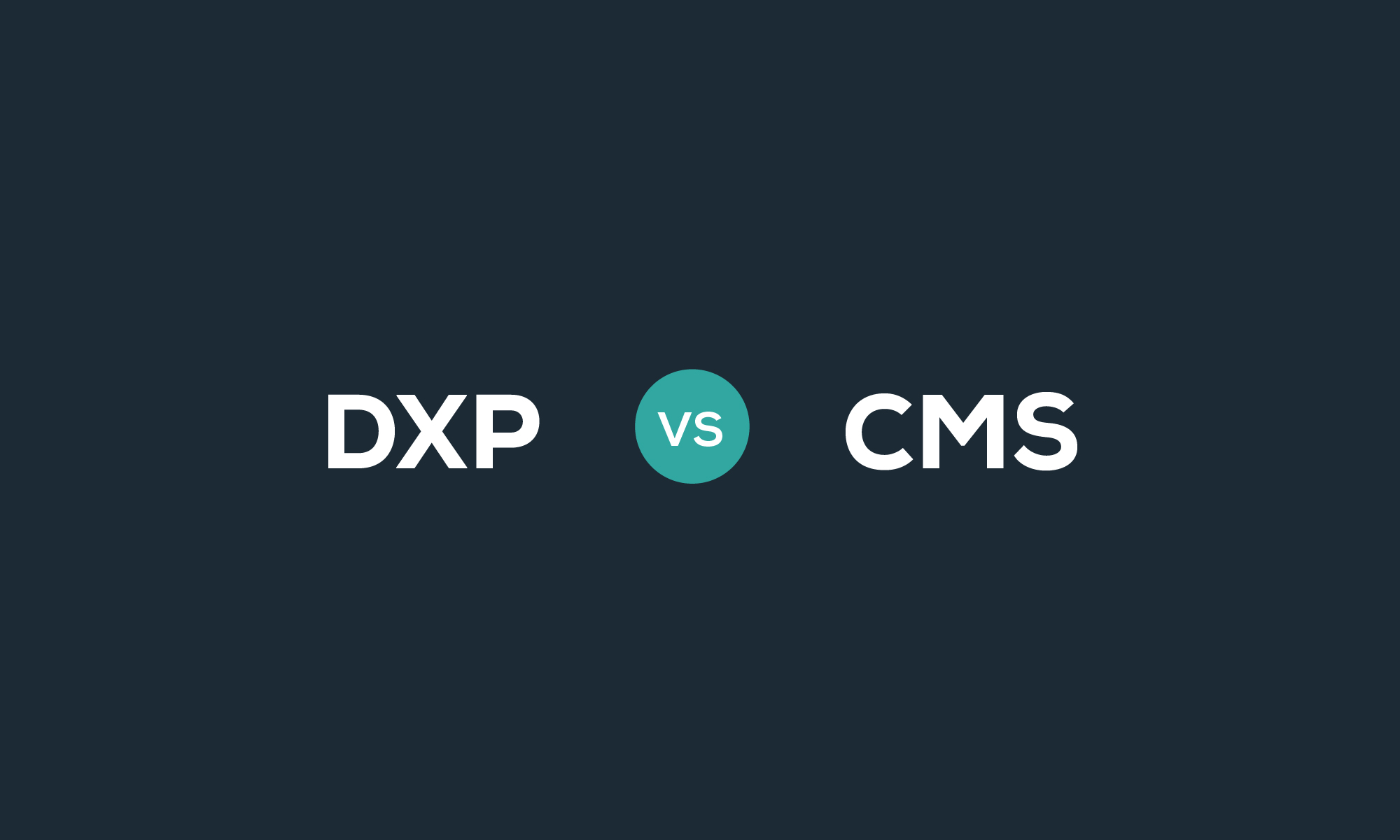DXP vs CMS: What's the Difference?
Are you looking for information to help you understand the core differences between a CMS and a DXP? A Content Management System (CMS) focuses more on the content, while a Digital Experience Platform (DXP) focuses more on the customer experience. Having a clear understanding of how each of these platforms works and how they differ will help you make better business decisions.

It's challenging to keep up with tech industry acronyms. CMS, DXP — these are only two you should understand.
At the beginning of the website creation and design era, being different and innovative was a sign of success. As the internet has matured, there's been a shift in focus on the user's experience. Because of this, we're beginning to see people move away from traditional content management systems (CMS) to digital experience platforms (DXP) that focus more on usability across touchpoints.
What is the Definition of CMS?
Content Management Systems (CMS) are an excellent solution for helping businesses organize, design, and publish content. These systems allow teams to collaborate and access a business’s website from anywhere.
Content management systems focus on content (made obvious by its name) rather than user experience. These platforms are used to publish content for everyone to see, such as blogs of web copy. The problem is, each user has different needs and questions they need answered, and often the content published for EVERYONE isn’t relevant to them.
A CMS is limited in providing customized content specifically for each user based on their browsing history and search terms. A DXP and a hybrid CMS model now allow businesses to create content with ease while using artificial intelligence (AI) to serve up specific content when it is needed for each visitor to a website or app.
What is the Definition of DXP?
Digital Experience Platforms integrate various software to focus on audience and customer experience. The focus of DXPs is to continually improve upon the customer’s experience based on their interaction with a brand. Multiple integrations are involved in a DXP, including apps, websites, and integrated portals — such as online order forms and newsletter subscriptions. These various services are linked to a kind of “command centre,” or the DXP, which focuses on creating a personalized experience for each user.
Because DXPs are an entire system approach, they often have a CMS at their foundation with additional functionalities such as:
- Commerce solutions,
- Asset and data management,
- Engagement solutions like chatbots,
- AI and machine learning elements to customize digital experiences,
- Customer relationship management (CRM) centers, and
- Contextual relevance opportunities such as language translation.
These elements all work together to create unique experiences for each user. Have you ever received an email newsletter about an ottoman seemingly right after looking one up on a popular furniture website? This is a DXP at work.
What is the Difference Between A CMS and DXP?
It may appear as though DXPs are just a CMS that's evolved to link a variety of portals and platforms. However, the motivation behind DXPs is different. DXP companies look at completely restructuring the conventional ways of looking at digital operations.
They revamp the front-end experience and the back-end operations of a business to prioritize the customer experience.
A CMS is dedicated and focused on creating and delivering content — an essential part of branding and business strategy. However, it’s only one part. A custom user experience is necessary to succeed in today’s modern age. A DXP goes beyond publishing content and instead focuses on personalizing experiences across channels for each user while providing real-time data.
Most CMS solutions will likely migrate to DXPs since they’re built from a CMS with more robust integrations and data solutions. Think transition from CMS to DXP rather than CMS versus DXP. The future of web technology and management will involve one system taking care of numerous platforms and touchpoints through APIs and protocols that will reduce the workload and allow teams to manage more extensive projects.
Using modern technology to your advantage can mean reducing workload and increasing sales. If you set up your system correctly, a customer can feel like you’re talking directly to them and their needs. The best part is you’re not involved in the tedious early work of converting a visitor into a sale. If set up correctly, technology can do a lot of the top-of-funnel work on your behalf.
Our team is here to help you use digital solutions such as a DXP to offer personalized experiences to meet your customer’s needs and increase your revenue.Get in touch with the Symetris team today to learn more.